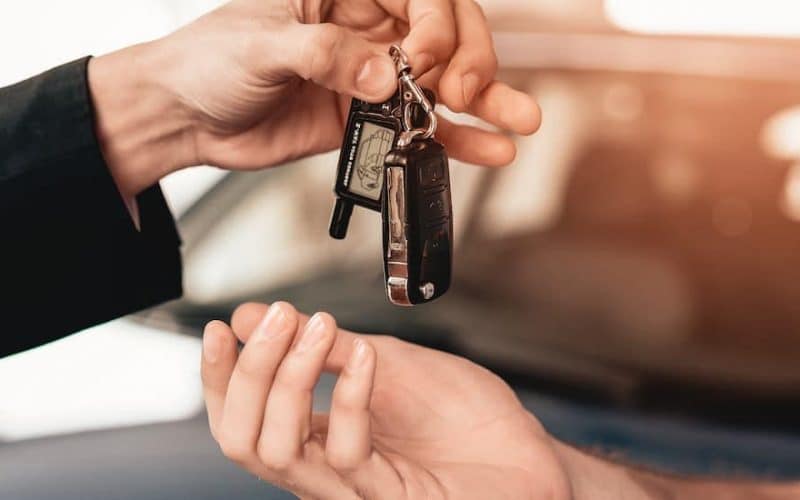Do you want to sell a car in California but don’t know where to begin? With a bit of help and preparation, the process can be easier. The amount of time you spend preparing your car for sale is determined by the type of vehicle you have and how you intend to sell it. Selling or trading it to a dealership may be less hassle than selling it privately, but it may also be less money (or a lot less). If the car isn’t worth much, simple preparation can help you sell it faster and for more money. Follow these guidelines to sell a car in California successfully.
How to Sell a Car in California
Step 1: Gather All of Your Paperwork.
Before you sell your car, you should get your paperwork in order and know what you’ll need to make the sale go smoothly. In California, it’s more than just the car bill of sale.
You have the California Certificate of Title as the owner of the vehicle, which proves ownership. When you sell a vehicle, you must transfer the title to the person who is purchasing it. You’ll need the following:
- Your most recent vehicle title
- The seller’s and, if applicable, the lienholder’s signatures
- The purchaser’s signature
If you don’t have your title, fill out the Application for Duplicate or Transfer of Title (REG 227). On the other hand, if there are any errors in the title, use Form Reg 101, Statement of Error or Erasure, to correct the problem. If you’re selling a car in California, you may also need the following paperwork:
- The Vehicle/Vessel Transfer and Reassignment (REG 262) form, which you must obtain from the DMV because it is not available online (you can call 1-800-777-0133 to have it mailed to you), discloses the odometer reading.
- Bill of sale for a car (California DMV form)
Read Also: HOW TO SELL ON WALMART: All You Need to Know
If you are selling the vehicle to a member of your family, you must complete a Statement of Information. Most of the time, if you want to sell a car in California, you need a valid smog certificate.
Almost certainly, the person who wants to buy your car will want to have it checked out to make sure everything works. Even though the buyer pays for this process with a reputable mechanic, you must still coordinate with the buyer.
Even if the buyer does not request an inspection, you should still conduct one. If you do nothing else, get a CarFax report that shows the history of your car, including any accidents or big problems.
Step 2: Determine a Price Range
It takes more than paperwork to learn how to sell a car in California. It’s all about getting the best price for your car. a price that allows you to part with your vehicle.
As previously stated, car appreciation has increased, so you should check out a site like Kelley Blue Book to see what your car is worth these days. It’s a good idea to have a minimum and maximum price in mind so you can negotiate a range.
Step 3: Advertise Your Vehicle.
After you’ve gathered your paperwork, performed an inspection, and established a price range, it’s time to post your car listing and sell your car! Make sure your vehicle is clean and that you take clear photos of the outside and inside of the vehicle.
You could sell your vehicle on Craigslist, OfferUp, Facebook Marketplace, AutoTrader, or any other site that allows you to do so.
Step 4: Pay Any Fees Associated With Selling Your Car
You want to sell a car in order to make money, but that does not mean you will not spend any money. You must pay any fees associated with the sale of your vehicle. According to the California DMV website, you may be charged the following fees:
- Transfer Use Tax on duplicate titles, based on the buyer’s county of residence
- Registration\sPenalties
The transfer fee is $15, as previously stated. Other potential fee costs can be found here. All paperwork and fees must be completed and paid within 10 days of the car sale date.
Step 5: Work With the Buyer to Complete the Necessary Paperwork.
When you find a buyer, you must get paid and fill out the paperwork with the buyer to make the sale official.
You, as the seller and buyer, must fill out Form REG 262, “Vehicle/Vessel Transfer and Reassignment,” which you must obtain from the DMV ahead of time.
Make sure you have the release form ready if there is a lienholder. The license plates must then be taken off, and both of you must tell the DMV that the ownership has changed.
Step 6: Work With the Buyer to Complete the Necessary Paperwork.
You must submit the transfer documents to the DMV after completing the necessary paperwork. You can fill out the Notice of Transfer and Release of Liability online 5 days after the sale.
You’ll need the seller’s full name and address, the VIN number, and license plate numbers to finish the transaction. To make it official with the DMV, both you as the seller and the buyer must formally submit documents and pay the required fees.
What Documents Are Required to Sell a Used Car in California?
When you find a buyer, you must get paid and fill out the paperwork with the buyer to make the sale official.sold, inherited, or gifted (NRL). The paperwork notifies the DMV of the ownership change. It absolves you of any liability for any parking or traffic violations, as well as any civil or criminal actions arising from the vehicle after the date of sale.
What Paperwork Do I Need to Sell My Car Privately?
#1. Title
The title to your car denotes ownership, and there are procedures for transferring ownership to a potential buyer. While retitling laws vary by state, you’ll almost certainly be required to sign the title as the seller and disclose the vehicle’s odometer reading.
#2. Purchase Agreement
Although a bill of sale is not legally required as one of the documents required when selling a car, it is still a good idea to provide one. It establishes the date of sale and ensures that you release liability and that your potential buyer takes responsibility for the vehicle’s as-is condition, including the odometer reading.
#3. Documentation of Emissions Testing
If your state requires regular emissions tests, include that paperwork when selling your car. Your buyer will most likely want to see that the car they’re buying has passed all of its emissions tests.
#4. Owner’s Guide
While you are not required by law to provide the owner’s manual to your buyer, they will most likely request it.
#5. Warranty Paperwork
If your vehicle has a transferable warranty, you must have that paperwork on hand when selling it. In fact, your warranty may add value to the sale of your car—do some research to find out how much.
Service Records You are not required by law to provide service records when selling your car. They can, however, be useful in finalizing a sale. Potential buyers want to see that the car they’re buying has been well-maintained, so having documentation of oil changes, brake services, fluid top-offs, and other routine maintenance is beneficial.
What Is the Most Effective Way to Sell a Car in California?
If you’re selling directly to another private party, the title can be tricky: if your vehicle has a lien (that is, it hasn’t been completely paid off), you won’t have your title in hand. In this case, you’ll need to coordinate the transfer with your buyer’s financial institution. However, if you own your car outright and don’t owe any money on it, you’ll have the title and will need it to sell it.
How Do I let CA DMV Know I Sold My Car?
You must submit a Notice of Transfer and Release of Liability when you sell or transfer your vehicle or vessel to another party (NRL). This informs DMV of the vehicle’s ownership change and protects you from parking, traffic, and civil litigation.
The NRL is only used when the vehicle or vessel’s ownership has changed. An NRL is not required for legal owner transfers (transfers between lenders or removal of a lienholder from the title).
The final step is to complete the transaction once you and the buyer have agreed on a sale price. To accomplish this, both parties must complete the title and form REG 262 together. Once the seller has accepted your payment, remove your license plates from the vehicle.
Following this, both parties must notify the DMV of the sale. The seller has five days to complete this task, while the buyer has ten. Fortunately for everyone, this report can be completed quickly online. If you’re returning your license plates, you can also do it in person at the DMV.
How Many Days Do You Have to Notify the DMV After Selling Your CA?
Within 30 days of the sale, you should submit a Vehicle Transfer Notification to limit your legal responsibility. After 30 days, a vehicle transfer notification does not release you from liability. Remember that the information on the vehicle record will remain unchanged until the new owner transfers the title into their name.
How Do I Protect Myself When Selling a Car Privately in California?
- Fill out the Notice Of Sale form for your state. Example from Florida: HSMV 82050
- Allow the buyer to take your license plates, but they must bring their own.
- Always ensure that the person purchasing your vehicle has a valid driver’s license.
- Confirm that the person purchasing your vehicle has valid auto insurance.
- Take down any business signs or identifying marks that point to you.
- Do not rely on buyers or car dealers to file Notice of Sale Forms on your behalf.
- Do I need a bill of sale if I have the title in California?
- A bill of sale is a legal document used to track the transfer of ownership between parties.
- It is not necessary to have it notarized or witnessed.
- Sales between California-licensed dealers are exempt from this requirement.
- When the title is properly endorsed, dealer sales to retail buyers are not required.
Conclusion
Learning how to sell a car in California can be difficult, but it is doable with some patience and persistence. You could get the most out of selling your car right now and put money back in your pocket.
Related Articles
- Best GEMINI Practices in 2023 & All You Need
- CORPORATE RECORD BOOK: Meaning, Importance & How to Get It
- Business Structure: Meaning, Types, Examples & All You Need
- CAR INSURANCE CARD: How To Obtain Proof of Insurance
- HOW TO SIGN OVER A CAR TITLE: Detailed Guide






